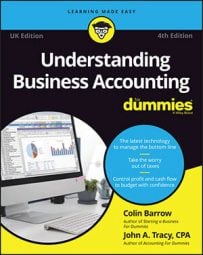Many businesses report unusual, extraordinary gains and losses in addition to their usual revenue, income, and expenses in an income statement. Every business experiences an occasional discontinuity — a serious disruption that doesn’t happen regularly or often, and can dramatically affect its bottom-line profit.
A discontinuity is something that disturbs the basic continuity of its operations or the regular flow of profit-making activities. In these situations, the income statement is divided into two sections:
-
The first section presents the ordinary, continuing sales, income, and expense operations of the business for the year.
-
The second section presents any unusual, extraordinary, and nonrecurring gains and losses that the business recorded in the year.
Here are some examples of discontinuities:
-
Downsizing and restructuring the business: Layoffs require severance pay or trigger early retirement costs; major segments of the business may be disposed of, causing large losses.
-
Abandoning product lines: When you decide to discontinue selling a line of products, you lose at least some of the money that you paid for obtaining or manufacturing the products, either because you sell the products for less than you paid or because you just dump the products you can’t sell.
-
Settling lawsuits and other legal actions: Damages and fines that you pay — as well as awards that you receive in a favorable ruling — are obviously nonrecurring extraordinary losses or gains (unless you’re in the habit of being taken to court every year).
-
Writing down (also called writing off) damaged and impaired assets: If products become damaged and unsellable, or fixed assets need to be replaced unexpectedly, you need to remove these items from the assets accounts.
Even when certain assets are in good physical condition, if they lose their ability to generate future sales or other benefits to the business, accounting rules say that the assets have to be taken off the books or at least written down to lower book values.
-
Changing accounting methods: A business may decide to use a different method for recording revenue and expenses than it did in the past, in some cases because the accounting rules (set by the authoritative accounting governing bodies) have changed. Often, the new method requires a business to record a one-time cumulative effect caused by the switch.
-
Correcting errors from previous financial reports: If you or your accountant discovers that a past financial report had an accounting error, you make a catch-up correction entry, which means that you record a loss or gain that had nothing to do with your performance this year.
According to financial reporting standards (GAAP), a business must make these one-time losses and gains very visible in its income statement. So in addition to the main part of the income statement that reports normal profit activities, a business with unusual, extraordinary losses or gains must add a second layer to the income statement to disclose these out-of-the-ordinary happenings.
If a business has no unusual gains or losses in the year, its income statement ends with one bottom line, usually called net income. When an income statement includes a second layer, that line becomes net income from continuing operations before unusual gains and losses. Below this line, each significant, nonrecurring gain or loss appears.
Say that a business suffered a relatively minor loss from quitting a product line and a very large loss from adopting a new accounting standard. The second layer of the business’s income statement would look something like the following:
| Net income from continuing operations | $267,000,000 |
| Discontinued operations, net of income taxes | ($20,000,000) |
| Earnings before cumulative effect of changes in accounting principles | $247,000,000 |
| Cumulative effect of changes in accounting principles, net of income taxes | ($456,000,000) |
| Net earnings (loss) | ($209,000,000) |
In assessing the implications of extraordinary gains and losses, use the following questions as guidelines:
-
Were the annual profits reported in prior years overstated?
-
Why wasn’t the loss or gain recorded on a more piecemeal and gradual year-by-year basis instead of as a one-time charge?
-
Was the loss or gain really a surprising and sudden event that could not have been anticipated?
-
Will such a loss or gain occur again in the future?

